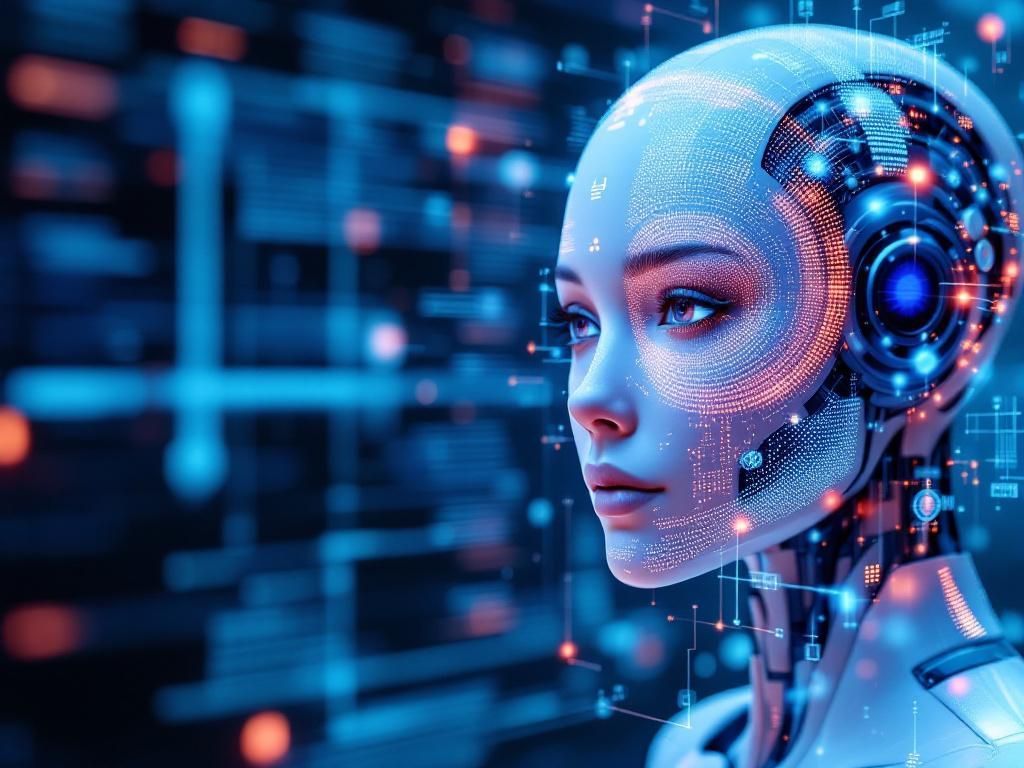As the digital landscape continues to evolve, artificial intelligence has emerged as a key player in various sectors, particularly in image recognition. By 2025, the capabilities and applications of AI image recognition will have transformed significantly, allowing businesses to leverage these technologies for enhanced decision-making, security, and user experience. This article explores some of the leading AI image recognition platforms that are poised to dominate the market in 2025, highlighting their features, strengths, and potential applications.
Understanding AI Image Recognition
AI image recognition involves the use of algorithms and neural networks to identify and classify objects, scenes, and patterns within digital images. This technology is driven by deep learning, a subset of machine learning that enables systems to learn from vast amounts of data. The primary components of AI image recognition systems include:
- Data Collection: Gathering and labeling large datasets of images.
- Model Training: Using these datasets to train deep learning models.
- Inference: Applying the trained models to new images to provide predictions or classifications.
Key Features to Look For
When evaluating AI image recognition platforms for 2025, consider the following features:
1. Accuracy and Reliability
The performance of an image recognition system is often measured by its accuracy rate—how well it can classify images correctly. Look for platforms that offer:
- High precision and recall rates.
- Robustness against varied image quality.
- Continuous improvement through feedback loops.
2. Scalability
As organizations grow, so do their image recognition needs. Choose platforms that allow:
- Seamless integration with existing systems.
- Scalability to handle increased volumes of data.
- Flexible pricing models to accommodate varying budgets.
3. Customization
Many businesses may have specific requirements that necessitate tailored solutions. Features to consider include:
- Ability to train custom models.
- Support for various image formats and types.
- APIs for easy integration into existing workflows.
4. Real-time Processing
For applications like surveillance or autonomous vehicles, real-time processing is crucial. Platforms should provide:
- Low-latency image processing.
- Support for edge computing.
- Efficient handling of video streams.
Top AI Image Recognition Platforms for 2025
Here are some of the most promising AI image recognition platforms that are expected to excel in 2025:
1. Google Cloud Vision AI
Google Cloud Vision AI stands out for its powerful image recognition capabilities powered by Google’s extensive resources. Key features include:
- Label detection for identifying objects and entities.
- Facial recognition with attributes estimation.
- Text extraction from images (OCR).
Applications: Retail analytics, security surveillance, and media content analysis.
2. Amazon Rekognition
Amazon Rekognition offers a robust set of features, including:
- Facial analysis and comparison.
- Object, scene, and activity recognition.
- Integration with AWS services for enhanced capabilities.
Applications: Identity verification, customer insights, and video analysis.
3. Microsoft Azure Computer Vision
Microsoft’s Azure Computer Vision is known for its versatility and integration with other Azure services. Its main features are:
- Image categorization and tagging.
- Automated image captioning.
- Spatial analysis for insights on user interaction with spaces.
Applications: Smart buildings, e-commerce, and health monitoring.
4. IBM Watson Visual Recognition
IBM Watson leverages AI for advanced visual recognition tasks. Notable features include:
- Custom model training using unique datasets.
- Object detection and classification.
- Integration with Watson AI services for insights.
Applications: Marketing analysis, autonomous systems, and compliance monitoring.
5. Clarifai
Clarifai is an independent platform that specializes in a wide range of AI image recognition tasks. Key features include:
- Customizable models for specific use cases.
- Robust API for developers.
- Support for video recognition and analysis.
Applications: Content moderation, product recognition, and augmented reality.
Comparative Analysis of Platforms
| Platform | Accuracy | Customization | Real-time Processing |
|---|---|---|---|
| Google Cloud Vision AI | High | Limited | Yes |
| Amazon Rekognition | High | Moderate | Yes |
| Microsoft Azure Computer Vision | Very High | High | Yes |
| IBM Watson Visual Recognition | High | Very High | Moderate |
| Clarifai | High | Very High | No |
Future Trends in AI Image Recognition
As the technology behind AI image recognition continues to advance, several trends are expected to shape its future:
1. Enhanced Privacy Measures
With increasing concerns about privacy and data security, future platforms will likely incorporate:
- On-device processing to minimize data transfer.
- Robust encryption protocols for sensitive data.
2. Integration with Augmented Reality
AI image recognition will increasingly integrate with AR technologies to enhance user experiences, leading to applications such as:
- Interactive gaming.
- Enhanced shopping experiences.
3. Multi-Modal Recognition
The ability to analyze images in conjunction with other data types (e.g., text, sound) will become vital for gaining deeper insights and making informed decisions.
Conclusion
The landscape of AI image recognition is rapidly evolving, with platforms continuing to push the boundaries of what is possible. By 2025, the leading technologies will not only provide impressive accuracy and functionality but will also be designed with user privacy and ethical considerations in mind. Organizations looking to adopt these technologies should be proactive in understanding the capabilities and limits of these platforms to maximize their business potential.
FAQ
What are the best AI image recognition platforms for 2025?
Some of the top AI image recognition platforms expected for 2025 include Google Cloud Vision, Amazon Rekognition, Microsoft Azure Computer Vision, and IBM Watson Visual Recognition.
How does AI image recognition work?
AI image recognition uses machine learning algorithms to analyze and interpret visual data, identifying objects, faces, and scenes in images.
What industries benefit most from AI image recognition?
Industries such as retail, healthcare, automotive, and security greatly benefit from AI image recognition for applications like inventory management, patient diagnostics, and surveillance.
Are there any privacy concerns with AI image recognition?
Yes, privacy concerns arise with AI image recognition, particularly regarding data collection, surveillance, and potential misuse of personal information.
Can AI image recognition be used in real-time applications?
Yes, AI image recognition can be implemented in real-time applications, such as live video analysis for security systems and augmented reality experiences.
What advancements can we expect in AI image recognition by 2025?
By 2025, advancements in AI image recognition may include improved accuracy, faster processing times, and enhanced integration with other AI technologies like natural language processing.




